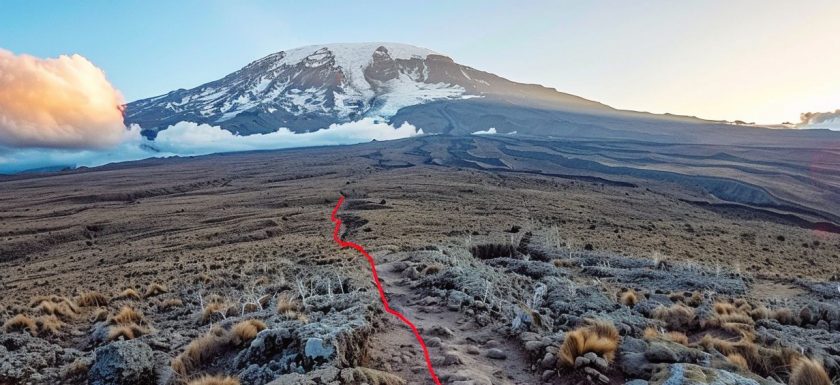
Are you planning a trek to Kilimanjaro and torn between choosing the Lemosho or Northern Circuit route?
In this article, we will provide an in-depth overview of both routes, highlighting their unique features, pros and cons, as well as a detailed comparison on factors such as difficulty level, scenery, length, cost, and availability.
Whether you prioritize stunning views, challenging terrain, or budget considerations, we’ll help you make an informed decision on which route suits your preferences and fitness level best.
Key Takeaways:
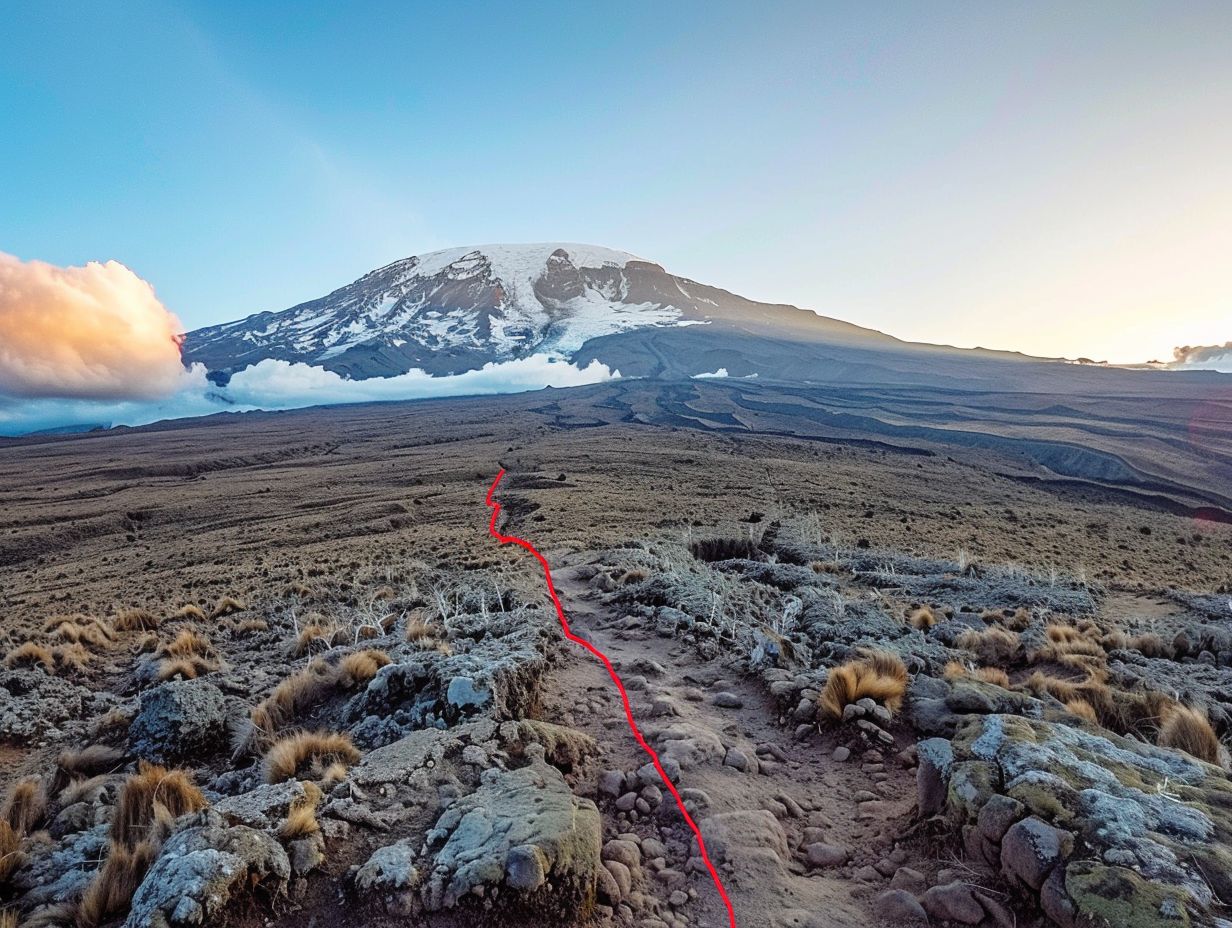
- The Lemosho and Northern Circuit Routes are two popular options for climbing Mount Kilimanjaro in Tanzania.
- The Lemosho Route offers a unique and diverse trekking experience, while the Northern Circuit Route boasts stunning views and a longer journey.
- Factors such as difficulty level, scenery, length, and cost should be considered when choosing between the two routes, but also take into account personal preferences and fitness level.
What Are the Lemosho and Northern Circuit Routes?
The Lemosho and Northern Circuit routes are two popular paths up Mount Kilimanjaro, offering trekkers breathtaking views and diverse landscapes in Tanzania, Africa.
Both routes provide an immersive experience, allowing hikers to witness the transition from lush rainforests to alpine deserts and stunning glaciers.
What sets the Lemosho route apart is its gradual ascent profile, offering ample time for acclimatization and maximizing chances of reaching the summit. On the other hand, the Northern Circuit route, known for its length and remoteness, provides a less crowded and more secluded journey, perfect for those seeking a peaceful pilgrimage up the majestic Kilimanjaro.
Overview of Lemosho Route
The Lemosho Route on Kilimanjaro is renowned for its scenic beauty, diverse landscapes, and challenging yet rewarding climb, attracting trekkers seeking an unforgettable adventure.
One of the remarkable features of the Lemosho Route is its varied terrain, which transitions from lush rainforests to alpine meadows and eventually barren landscapes, providing trekkers with a rewarding visual experience. As you ascend, the route offers stunning panoramic views of the surrounding landscape, including glimpses of majestic glaciers and the vast African plains stretching out below.
The trekking experience on the Lemosho Route is characterized by its sense of solitude and tranquility compared to busier trails, allowing trekkers to immerse themselves in the raw beauty of Kilimanjaro at their own pace. Notable landmarks like the Shira Plateau and the Lava Tower add intrigue to the journey, offering unique geological wonders to behold along the way.
What Makes Lemosho Route Unique?
What sets the Lemosho Route apart is its combination of adventure and natural beauty, providing trekkers with an unparalleled experience of Kilimanjaro’s scenic wonders.
The Lemosho Route is renowned for its gradual ascent, giving climbers ample time to acclimatize and increase their chances of summiting successfully. This route offers a diverse range of landscapes, from lush rainforests to sweeping alpine meadows, unlike any other route on Kilimanjaro. Trekking through these varied terrains allows adventurers to witness a rich array of flora and fauna, with the chance of spotting unique wildlife such as Colobus monkeys and exotic bird species.
What Are the Pros and Cons of Lemosho Route?
Exploring the pros and cons of the Lemosho Route reveals its high success rate due to effective acclimatization strategies, though it demands good physical fitness and trekking endurance from participants.
One of the key benefits of the Lemosho Route is the gradual ascent it offers, allowing for better acclimatization to the altitude. This route provides ample time for climbers to adjust to the increasing elevation, reducing the risk of altitude sickness and increasing the chances of reaching the summit successfully.
This gradual ascent also means that the trek is longer compared to some other routes, spanning around seven to nine days. Participants need to be prepared for the extended duration and the physical demands it places on the body.
Overview of Northern Circuit Route
The Northern Circuit Route on Kilimanjaro stands out for its panoramic views, extended duration, and circumnavigation of the mountain’s summit, offering trekkers a comprehensive adventure.
Spanning over 10-12 days, this route provides a more immersive experience compared to other popular trails on the mountain, allowing for better acclimatization due to its gradual ascent.
Trekkers on the Northern Circuit Route get to witness a diverse range of ecosystems, from lush rainforests to alpine deserts, all while enjoying the solitude of the less crowded path. One of the highlights of this trek is the opportunity to view the iconic glaciers that adorn Kilimanjaro’s peak, creating a breathtaking backdrop against the vast African plains below.
What Makes Northern Circuit Route Unique?
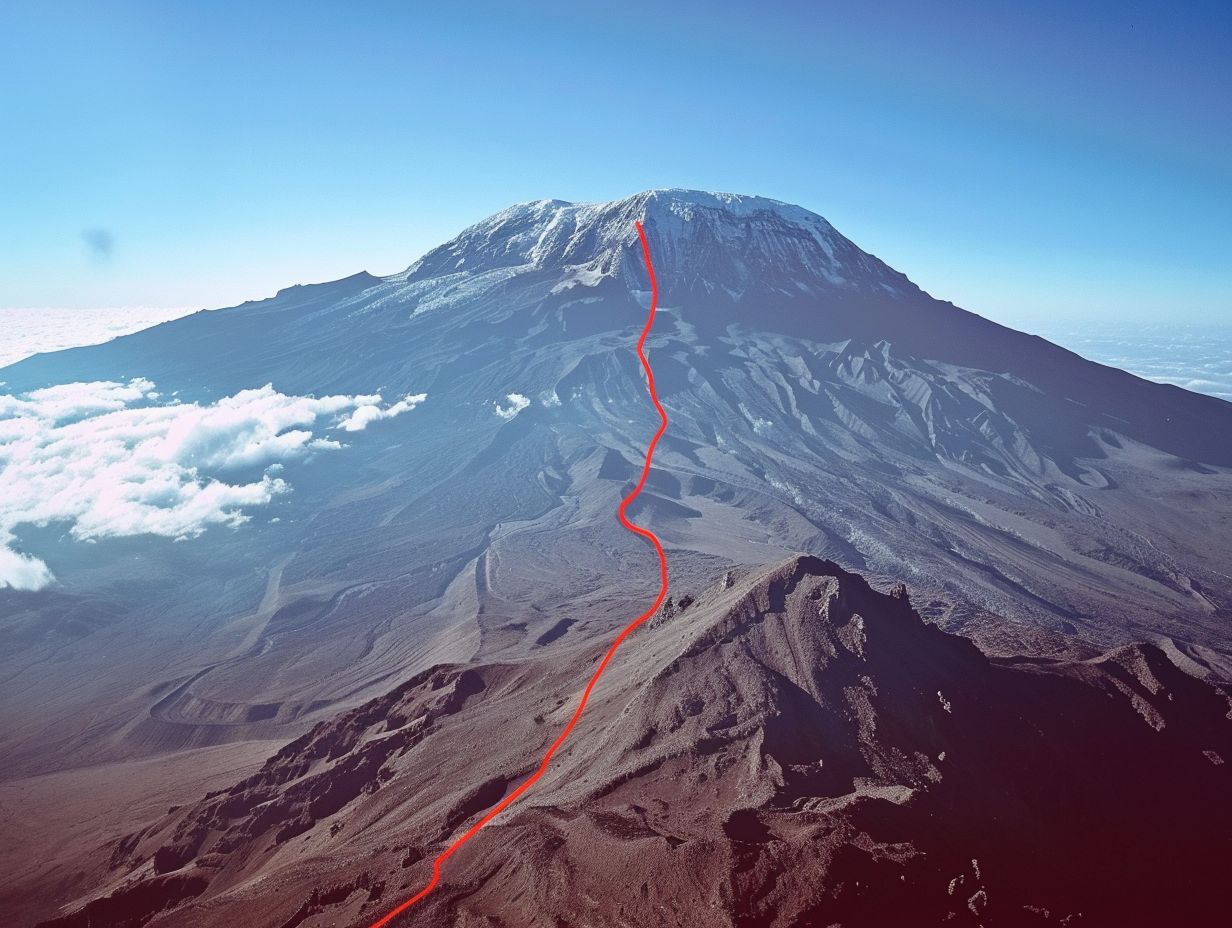
The Northern Circuit Route‘s exceptional diversity of landscapes, coupled with a high summit success rate, provides trekkers with a chance to witness Kilimanjaro’s rich flora and encounter its diverse wildlife.
One of the key features that sets the Northern Circuit Route apart is its lengthier duration, offering trekkers a more gradual acclimatization process, enhancing their chances of reaching the summit.
This route also boasts lower crowds compared to other popular trails, allowing for a more serene trekking experience amidst the stunning scenery of Kilimanjaro.
Climbers on the Northern Circuit Route have the unique opportunity to traverse through a variety of terrains, from lush rainforests at lower altitudes to arid alpine deserts closer to the summit. This diverse landscape not only adds to the trek’s appeal but also provides a glimpse into the different ecosystems that exist on Africa’s highest peak.
With its longer duration and gradual ascent, the Northern Circuit Route generally has higher summit success rates than some of the shorter, more challenging routes. This increased success rate, combined with the chance to observe Kilimanjaro’s unique flora and fauna up close, makes it an attractive option for both seasoned climbers and those seeking a more leisurely ascent.
What Are the Pros and Cons of Northern Circuit Route?
Evaluating the advantages and disadvantages of the Northern Circuit Route reveals its serene atmosphere, flexibility in group size, and potential weather challenges that trekkers may encounter on their journey.
One of the key strengths of the Northern Circuit Route is the sense of tranquility it offers, away from the crowds that can be found on other popular trails. The route is known for providing a more exclusive trekking experience, allowing trekkers to immerse themselves in the untouched beauty of Kilimanjaro.
The route’s flexibility in group size means that it can accommodate both smaller, intimate groups and larger expedition-style teams, catering to varying preferences and dynamics.
One of the potential weaknesses of the Northern Circuit Route lies in the weather conditions that trekkers may face, especially as they ascend to higher altitudes.
The route’s longer duration increases the exposure to diverse weather patterns, ranging from intense sun exposure to sudden changes in temperature and the possibility of encountering snow.
It is imperative for trekkers to be well-prepared for these weather fluctuations to ensure a safe and enjoyable trekking experience.
Comparison of Lemosho and Northern Circuit Routes
Evaluating the Lemosho and Northern Circuit routes side by side reveals differences in trek difficulty, scenery, trek length, and cost, providing climbers with varied options based on their preferences and priorities.
When comparing the two routes, the Lemosho route is known for its gradual ascent, offering climbers a good acclimatization rate. On the other hand, the Northern Circuit route is often considered the longest route, providing more time for acclimatization and reducing the risk of altitude sickness.
In terms of landscapes, the Lemosho route takes climbers through diverse ecosystems, including lush rainforests and expansive heath zones, while the Northern Circuit route offers stunning panoramic views of the northern slopes.
In terms of duration, the Lemosho route usually takes around 7-8 days to complete, catering to those who prefer a slightly shorter trek, whereas the Northern Circuit route typically spans 9-10 days, appealing to climbers looking for a longer and more gradual climb.
Regarding budget considerations, the Lemosho route often comes at a higher cost due to its popularity and the amenities provided, while the Northern Circuit route, being less crowded, can sometimes be a more budget-friendly option for climbers.
Difficulty Level
Assessing the difficulty level of Kilimanjaro routes like Lemosho and Northern Circuit involves considering factors such as terrain steepness, trekking challenges, and the physical fitness required for a successful climb.
When comparing the two routes, the Lemosho route is known for its gradual ascent, offering climbers more time to acclimatize to the altitude compared to the steeper Northern Circuit route.
The Northern Circuit is longer and provides a more diverse landscape, with varying terrains that can pose both mental and physical challenges.
While both routes require a good level of fitness, the Northern Circuit demands higher endurance levels due to its length and the altitude gains along the way. The Lemosho route, although less steep, still presents its challenges with its rocky sections and the need for continuous trekking over multiple days.
Scenery and Views
Comparing the scenery and views along the Lemosho and Northern Circuit routes showcases the diverse landscapes, wildlife sightings, and panoramic vistas that trekkers can witness during their Kilimanjaro climb.
While the Lemosho route is praised for its gradual ascent, allowing trekkers to acclimatize better and enjoy the journey, the Northern Circuit presents a more secluded and serene trek with fewer crowds and a sense of remoteness.
On the Lemosho route, hikers pass through lush rainforests teeming with unique flora and fauna, transitioning into sweeping savannas dotted with enchanting wildlife sightings like elephants and buffalo.
Contrastingly, the Northern Circuit exposes adventurers to alpine deserts with sparse vegetation, offering a starkly beautiful yet challenging terrain to conquer. The magical allure of the Northern Circuit lies in its encompassing views from varying altitudes, providing trekkers with ever-changing perspectives of Kilimanjaro’s majestic snowy peaks and surrounding Tanzanian landscape.
Length and Time
The comparison of trek length and time required for the Lemosho and Northern Circuit routes involves assessing factors such as acclimatization time, trekking days, and the overall duration of the climb for each route.
When considering the acclimatization period, the Lemosho route typically offers a more gradual ascent, allowing trekkers ample time to adjust to higher altitudes, thus reducing the risk of altitude sickness. On the other hand, the Northern Circuit route is known for its extended acclimatization phase, which aids in better acclimatization but adds to the overall duration of the trek.
In terms of trekking days, the Lemosho route usually takes around 7-8 days to complete, while the Northern Circuit spans around 9-10 days, giving trekkers a more immersive experience and additional time to enjoy the stunning scenery.
The Lemosho route tends to be slightly shorter in total duration compared to the Northern Circuit, making it a popular choice for those seeking a challenging yet slightly quicker climb.
Cost and Availability
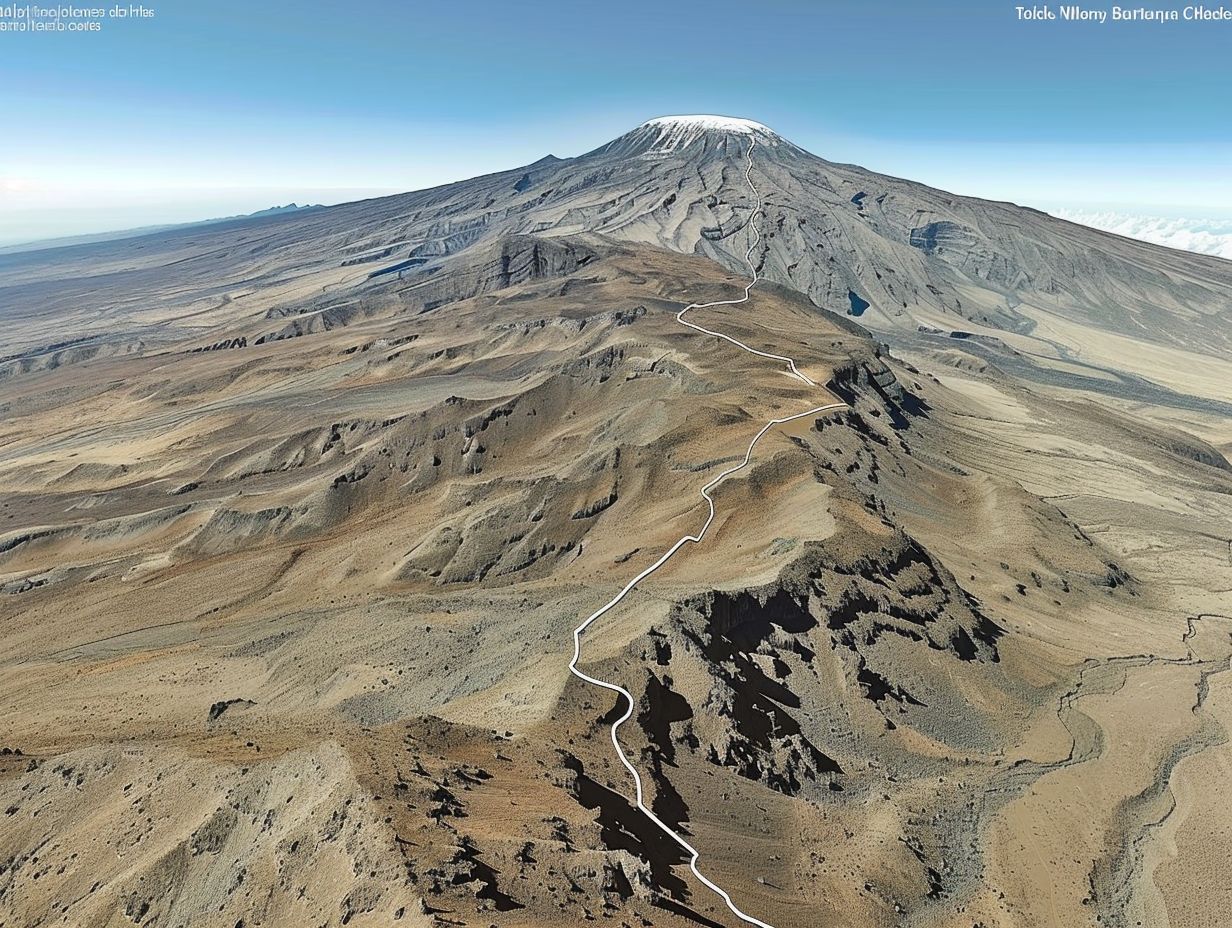
Comparing the cost and availability factors of the Lemosho and Northern Circuit routes involves evaluating expenses, group size accommodations, permit requirements, and the availability of guides for a successful Kilimanjaro trek.
When deciding between the Lemosho and Northern Circuit routes, one must consider the impact of group size on overall costs. The Lemosho route tends to attract smaller groups due to its popularity for its scenic beauty and gradual acclimatization, potentially resulting in higher costs per person.
In contrast, the Northern Circuit route, being less crowded, may offer more budget-friendly options for larger groups. Permit fees vary between the routes, with the Lemosho route generally requiring lower fees compared to the Northern Circuit.
Permit costs play a significant role in the overall budgeting process, and careful consideration of these expenses can help in making an informed decision.
Which Route Should You Choose?
Selecting the ideal Kilimanjaro route involves considering personal preferences, physical fitness levels, and expert recommendations to ensure a fulfilling and successful climbing experience.
When deciding between the Lemosho and Northern Circuit routes, it’s crucial to evaluate factors such as the terrain difficulty, the length of the trek, and the level of solitude desired during the climb.
The Lemosho route, known for its scenic beauty and gradual ascent, is favored by those seeking a more leisurely pace and fewer crowds, perfect for acclimatization.
On the other hand, the Northern Circuit route offers a longer journey with remarkable panoramic views and the highest success rate among routes, catering to climbers looking for a comprehensive experience.
Factors to Consider
Considering various factors like adventure preferences, trekking experience, personal choice, and environmental protection measures can help in making an informed decision on selecting the best Kilimanjaro route.
When determining between the Lemosho and Northern Circuit routes on Kilimanjaro, adventurers must first assess their yearning for a challenging climb versus a more secluded trek. While the Lemosho route boasts steeper and more demanding sections, the Northern Circuit provides a longer but less strenuous journey.
Those with prior trekking expeditions might relish the obstacles of the Lemosho, while novices may find the Northern Circuit’s gradual ascents more inviting.
Moreover, environmental sustainability should not be overlooked. The Lemosho route, with its fewer hikers and camps, allows for a lighter footprint on the mountain’s delicate ecosystem. On the other hand, the Northern Circuit, though less traveled, presents more opportunities for aficionados seeking solace in nature without compromising conservation efforts.
Personal Preferences and Fitness Level
Tailoring the choice of Kilimanjaro route to personal preferences, fitness levels, adventure expectations, and budget considerations can enhance the overall trekking experience and ensure a memorable climb.
In terms of personal preferences, some trekkers may prioritize solitude and tranquility, making the Lemosho route an ideal choice with its scenic beauty and fewer crowds.
For those seeking a more challenging ascent, the Umbwe route offers a steep and direct climb, perfect for seasoned hikers looking for a thrill.
Considering fitness levels, beginners might opt for the Marangu route, known for its gradual slopes and hut accommodations, while experienced climbers could challenge themselves on the Machame route, offering stunning vistas and diverse terrain.
Adventure enthusiasts with a higher budget may lean towards the Northern Circuit route, offering an extended trek with magnificent views and more time for acclimatization.
Expert Recommendations
Expert recommendations from reputable guides and tour operators like Jerry Tanzania Tours can provide invaluable insights into route selection, permit requirements, itinerary planning, and the overall trekking experience on Kilimanjaro.
One of the key aspects to consider when embarking on the journey to conquer Kilimanjaro is the choice of route. Each route offers its own unique challenges and rewards, whether it be the scenic Machame route known for its stunning views or the lesser-traveled Rongai route offering a more gradual ascent.
Understanding the permit requirements is vital to ensure a smooth climbing process. Experienced guides can help navigate this process, securing the necessary permits for the chosen route and ensuring compliance with park regulations.
Itineraries play a crucial role in the success of the trek. Tour operators like Jerry Tanzania Tours often design meticulously planned itineraries that allow for proper acclimatization, ensuring the safety and well-being of climbers throughout the ascent.
Frequently Asked Questions
What is the difference between Lemosho and Northern Circuit Route?
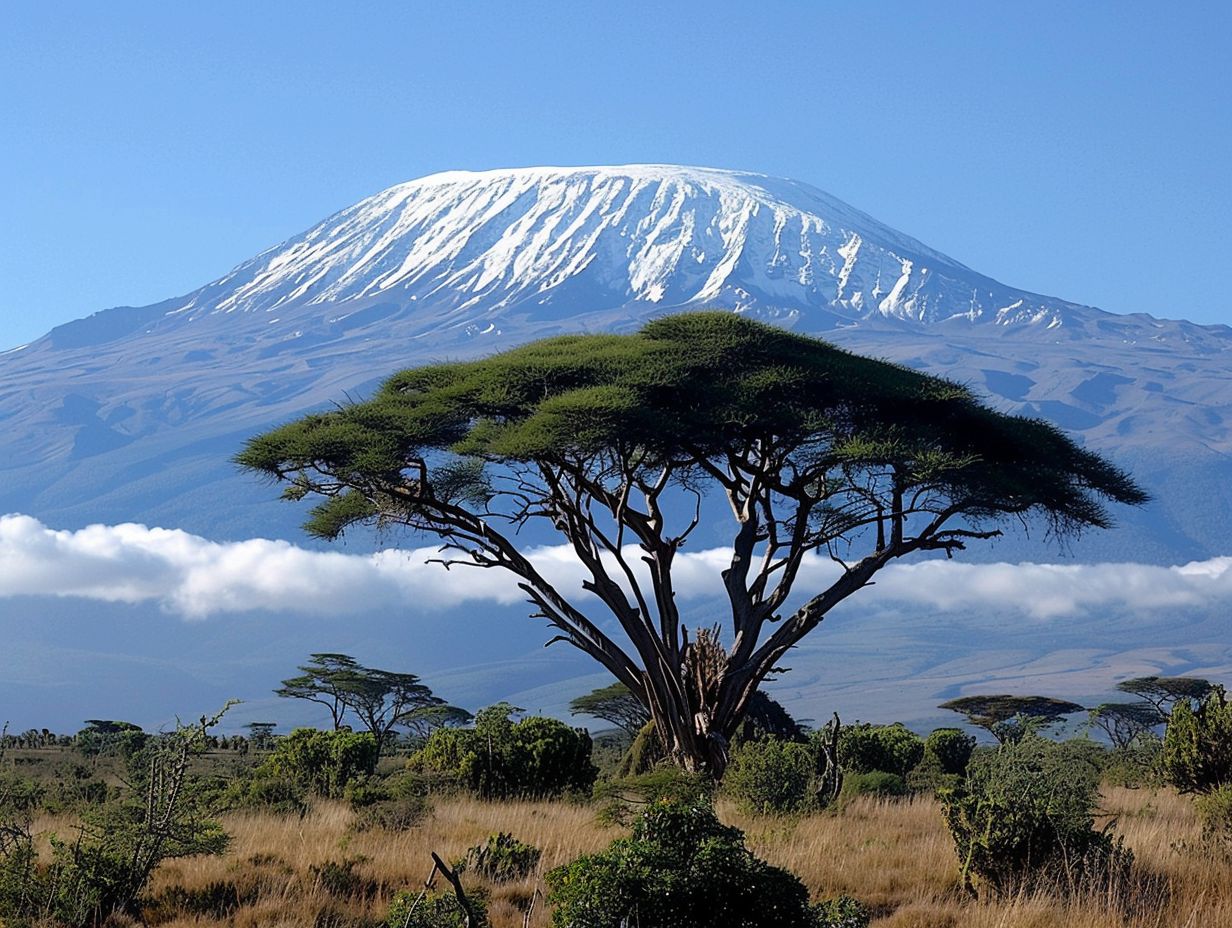
Lemosho and Northern Circuit Route are two popular routes to climb Mount Kilimanjaro. While both offer unique experiences, there are some key differences between them.
On the Lemosho route, you will start your climb from the west side of the mountain and join with the Machame route on day 3. On the other hand, Northern Circuit Route starts from the north side and takes a longer and more scenic route around the mountain.
Which route is more challenging – Lemosho or Northern Circuit?
Both Lemosho and Northern Circuit Route have their own challenges. Lemosho is generally considered more physically demanding due to its steep sections and high altitude. However, Northern Circuit is longer and takes more days to complete, making it mentally and physically challenging.
Which route offers better acclimatization – Lemosho or Northern Circuit?
Both Lemosho and Northern Circuit Route are known for their good acclimatization profile. However, Northern Circuit takes a longer route, allowing for a more gradual ascent and better acclimatization. This makes it a popular choice for those concerned about altitude sickness.
Which route offers better views – Lemosho or Northern Circuit?
Both routes offer stunning views of Mount Kilimanjaro. However, Northern Circuit is known for its panoramic views of the mountain from different angles. The route also passes through some of the most scenic and untouched areas of the mountain, making it a great choice for nature lovers.
Which route is less crowded – Lemosho or Northern Circuit?
Compared to the popular Machame and Marangu routes, both Lemosho and Northern Circuit are less crowded. However, Northern Circuit is known to be even less crowded than Lemosho, as it is a longer and less traveled route.
Which route is recommended for first-time climbers – Lemosho or Northern Circuit?
While both routes are suitable for first-time climbers, Lemosho is generally considered a better option. The route is shorter, less physically demanding, and offers a good acclimatization profile. However, if you have more time and are looking for a more challenging and scenic route, Northern Circuit can also be a great choice.